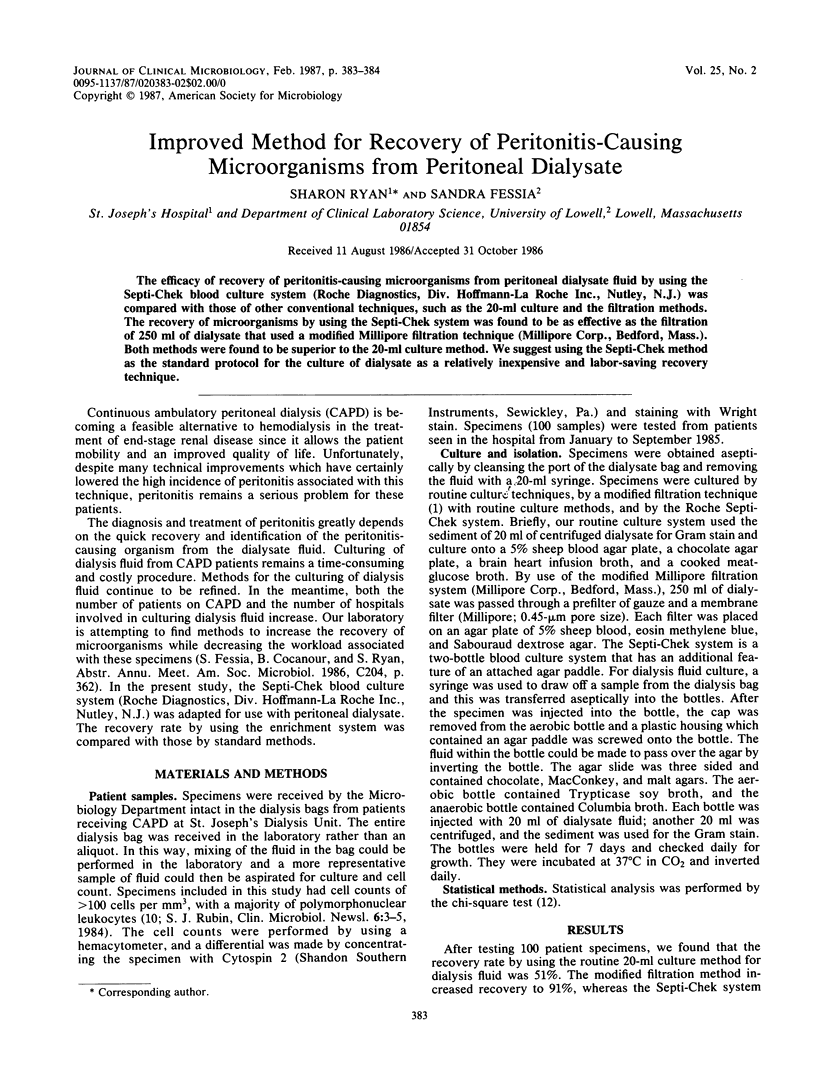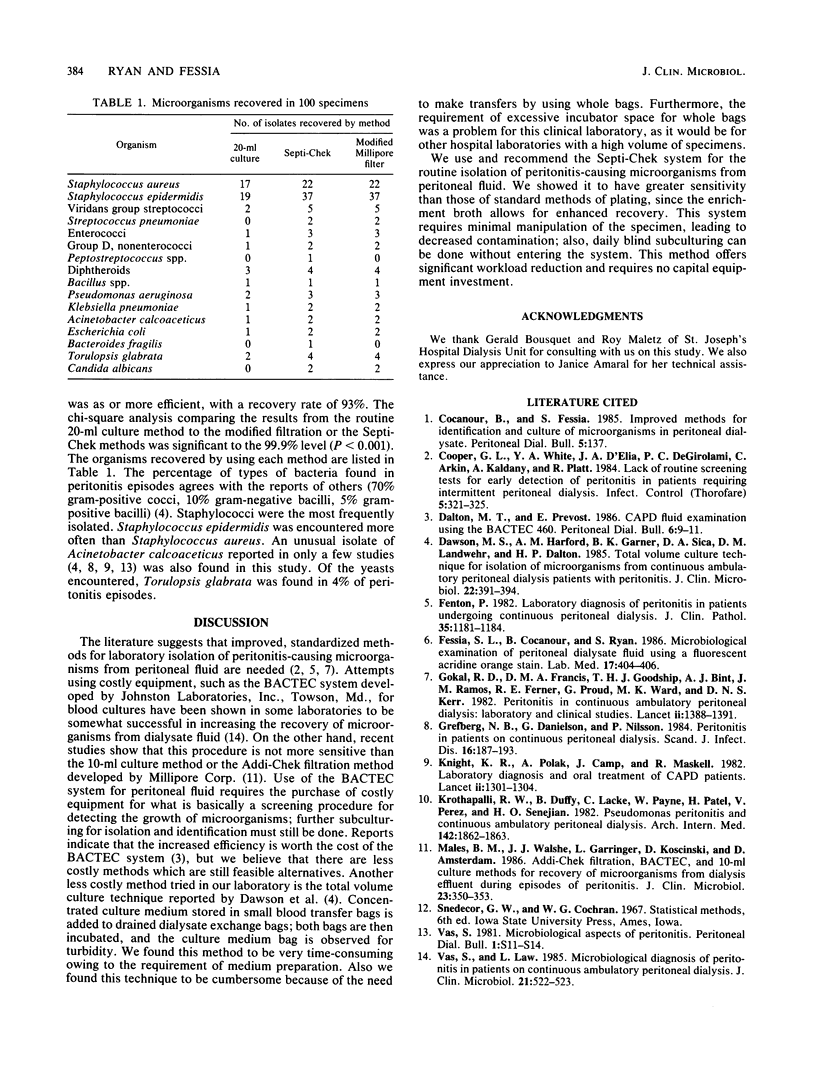Abstract
The efficacy of recovery of peritonitis-causing microorganisms from peritoneal dialysate fluid by using the Septi-Chek blood culture system (Roche Diagnostics, Div. Hoffmann-La Roche Inc., Nutley, N.J.) was compared with those of other conventional techniques, such as the 20-ml culture and the filtration methods. The recovery of microorganisms by using the Septi-Chek system was found to be as effective as the filtration of 250 ml of dialysate that used a modified Millipore filtration technique (Millipore Corp., Bedford, Mass.). Both methods were found to be superior to the 20-ml culture method. We suggest using the Septi-Chek method as the standard protocol for the culture of dialysate as a relatively inexpensive and labor-saving recovery technique.
Full text
PDF

Selected References
These references are in PubMed. This may not be the complete list of references from this article.
- Cooper G. L., White J. A., D'Elia J. A., DeGirolami P. C., Arkin C., Kaldany A., Platt R. Lack of utility of routine screening tests for early detection of peritonitis in patients requiring intermittent peritoneal dialysis. Infect Control. 1984 Jul;5(7):321–325. doi: 10.1017/s0195941700060501. [DOI] [PubMed] [Google Scholar]
- Dawson M. S., Harford A. M., Garner B. K., Sica D. A., Landwehr D. M., Dalton H. P. Total volume culture technique for the isolation of microorganisms from continuous ambulatory peritoneal dialysis patients with peritonitis. J Clin Microbiol. 1985 Sep;22(3):391–394. doi: 10.1128/jcm.22.3.391-394.1985. [DOI] [PMC free article] [PubMed] [Google Scholar]
- Fenton P. Laboratory diagnosis of peritonitis in patients undergoing continuous ambulatory peritoneal dialysis. J Clin Pathol. 1982 Nov;35(11):1181–1184. doi: 10.1136/jcp.35.11.1181. [DOI] [PMC free article] [PubMed] [Google Scholar]
- Gokal R., Ramos J. M., Francis D. M., Ferner R. E., Goodship T. H., Proud G., Bint A. J., Ward M. K., Kerr D. N. Peritonitis in continuous ambulatory peritoneal dialysis. Laboratory and clinical studies. Lancet. 1982 Dec 18;2(8312):1388–1391. doi: 10.1016/s0140-6736(82)91282-x. [DOI] [PubMed] [Google Scholar]
- Grefberg N., Danielson B. G., Nilsson P. Peritonitis in patients on continuous ambulatory peritoneal dialysis. A changing scene. Scand J Infect Dis. 1984;16(2):187–194. doi: 10.3109/00365548409087140. [DOI] [PubMed] [Google Scholar]
- Knight K. R., Polak A., Crump J., Maskell R. Laboratory diagnosis and oral treatment of CAPD peritonitis. Lancet. 1982 Dec 11;2(8311):1301–1304. doi: 10.1016/s0140-6736(82)91509-4. [DOI] [PubMed] [Google Scholar]
- Krothapalli R., Duffy W. B., Lacke C., Payne W., Patel H., Perez V., Senekjian H. O. Pseudomonas peritonitis and continuous ambulatory peritoneal dialysis. Arch Intern Med. 1982 Oct;142(10):1862–1863. [PubMed] [Google Scholar]
- Males B. M., Walshe J. J., Garringer L., Koscinski D., Amsterdam D. Addi-Chek filtration, BACTEC, and 10-ml culture methods for recovery of microorganisms from dialysis effluent during episodes of peritonitis. J Clin Microbiol. 1986 Feb;23(2):350–353. doi: 10.1128/jcm.23.2.350-353.1986. [DOI] [PMC free article] [PubMed] [Google Scholar]
- Vas S. I., Law L. Microbiological diagnosis of peritonitis in patients on continuous ambulatory peritoneal dialysis. J Clin Microbiol. 1985 Apr;21(4):522–523. doi: 10.1128/jcm.21.4.522-523.1985. [DOI] [PMC free article] [PubMed] [Google Scholar]


